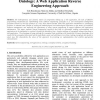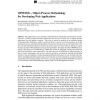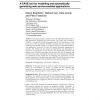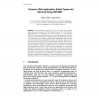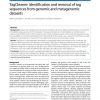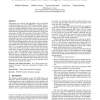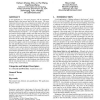IAJIT
2010
13 years 10 months ago
2010
: The heterogeneous and dynamic nature of components making up a web application, the lack of effective programming mechanisms for implementing basic software engineering principle...
ANSOFT
2002
13 years 12 months ago
2002
Abstract. Current practice in Web application development is based on the skills of the individual programmers and often does not apply the principles of software engineering. The ...
ANSOFT
2002
13 years 12 months ago
2002
Web applications can be classified as hybrids between hypermedia and information systems. They have a relatively simple distributed architecture from the user viewpoint, but a comp...
JUCS
2006
14 years 1 days ago
2006
Abstract: Recently a growing demand has arisen for methods for the development of smalland medium scale Web Information Systems (WIS). Web applications are being built in a rapidly...
IJWET
2006
14 years 2 days ago
2006
: This paper presents a CASE tool for the high-level specification of web applications integrated with web services. The CASE tool is based on WebML, a conceptual modelling languag...
COMSIS
2006
14 years 4 days ago
2006
Web applications security is one of the most daunting tasks today, because of security shift from lower levels of ISO OSI model to application level, and because of current situati...
DEBU
2008
14 years 5 days ago
2008
Data-driven Web services, viewed broadly as interactive systems available on the Web for users and programs, provide the backbone for increasingly complex Web applications. While ...
BMCBI
2010
14 years 6 days ago
2010
Background: Sequencing metagenomes that were pre-amplified with primer-based methods requires the removal of the additional tag sequences from the datasets. The sequenced reads ca...
VEE
2010
ACM
14 years 9 days ago
2010
ACM
Programmers who develop Web applications often use dynamic scripting languages such as Perl, PHP, Python, and Ruby. For general purpose scripting language usage, interpreter-based...
CCS
2010
ACM
14 years 9 days ago
2010
ACM
A web application is a "two-part" program, with its components deployed both in the browser and in the web server. The communication between these two components inevita...
